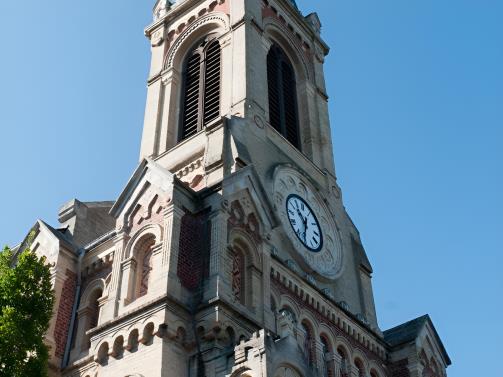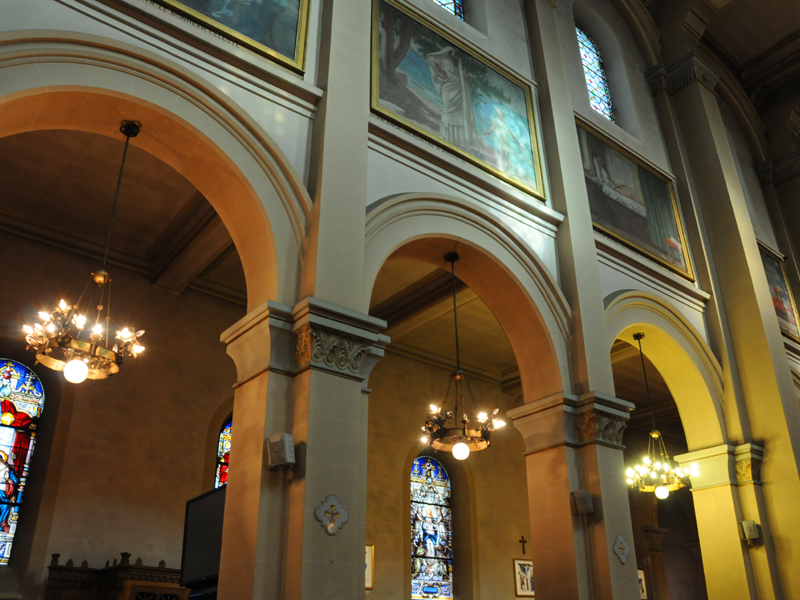Saint Augustine's Church
On August 30, 1864, the Duke of Morny solemnly laid the first stone of the church of Saint-Augustin, built on a piece of land ceded nine days earlier by the Société immobilière de Deauville. Built by the architects Desle-François Breney and Anatole Jal in the center of an enclosed garden, the building was consecrated on July 30, 1865 by the Bishop of Bayeux. The cemetery was built outside the limits of the new town, on the heights of Mount Canisy.
The architectural program reflects the pronounced taste of this period for eclecticism: the bell tower-porch offers a mixture of Gothic and Romanesque styles, the nave, extended by a semicircular apse and flanked by two aisles punctuated by whistle buttresses, is inspired by the basilica plan of early Christian religious buildings. The central vessel, initially with eight bays, is lit by arched bays pierced in the upper parts. The polychrome brick animates the exterior elevations, the limestone being reserved for the treatment of a few elements, including the portal executed by Kammer and the statue of Saint Augustine, the work of the sculptor Jules Franceschi, located at the tympanum.
The barrel vault and the triumphal arch separating the nave from the choir are decorated with a fresco by the Toulouse painter Louis Brodier. Representing Saint Augustine sitting in the center of the prophets and doctors of the Church, it was removed during the campaign of work carried out between 1929 and 1931 by the architects Paul and Raymond Delarue. They extended the nave by two additional bays, added a transept and an ambulatory linking the aisles, and built an axial chapel to the southeast. The main northwest façade is decorated with a remarkable set of nine paintings on enameled lava, executed in 1866 by Jules Jollivet, a student of Antoine Gros. Seven arched panels depict the New Testament evangelists and allegories of the theological virtues: Hope, Faith and Charity.
Two medallions represent Saint Paul and Saint Peter.
Twenty years earlier, in 1844, Jules Jollivet had designed a set of thirteen panels for the western façade of the church of Saint-Vincent-de-Paul in Paris, at the request of the architect Jacques Ignace Hittorff. The decoration, judged to be too suggestive, was removed at the request of the clergy before it was completed. In Deauville, the painter found a favorable home for architectural innovations, allowing him to put into practice the concepts of polychrome decoration, as outlined by Hittorff in his work L'Architecture polychrome chez les Grecs, published in 1851, which caused considerable controversy in Paris.
Texts © Images du patrimoine































































